This is a guest post from the Brick Busters, one of our FIRST LEGO League Robotics teams:
We are the FIRST LEGO League (FLL) Robotics team #3124 Brick Busters from the Greensboro Science Center. Each season for FLL, we build and program a robot to compete on a mat, as well as create an innovative solution project. This season, the FLL theme is Trash Trek, which means we were supposed to create a solution to an issue that is trash or recycling related. As a team, we decided to focus on finding a solution to Styrofoam.
Styrofoam (Aka plastic 6 or expanded polystyrene foam) is a petroleum based plastic made from a styrene monomer. Polystyrene is a lightweight material that is often used as a packing or insulation material because of its insulation properties. Styrofoam is less-expensive and better for packaging than paper so it is widely used. Most recycling centers, including the City of Greensboro location, do not have the capabilities to recycle styrofoam. Therefore a lot of styrofoam ends up in landfills after we are done with it, which is very bad because it is nonbiodegradable. There are 57 chemicals used during the creation of styrofoam and there is potential for some of these to end up in the environment if not disposed of correctly.
In September, we saw several news articles about mealworms eating styrofoam. We decided to test this and use it to develop a solution to styrofoam ending up in the environment. Our solution is to use mealworms to eat the Styrofoam and create community centers with mealworms where we drop off our Styrofoam. We will use special containers, which people will put styrofoam in and drop them off at the community center. The Styrofoam will be eaten by mealworms which will turn half of the styrofoam to carbon dioxide.
Mealworms can live off a diet of Styrofoam with no major difference then when they eat a regular diet. When mealworms eat styrofoam, they can actually digest it, rather than it rot in a landfill for hundreds of years. The process is very slow though, so it would take a lot of worms to break down all the Styrofoam that needs to be broken down. The feces they create is safe and could be used as fertilizer for gardens.
Week 1
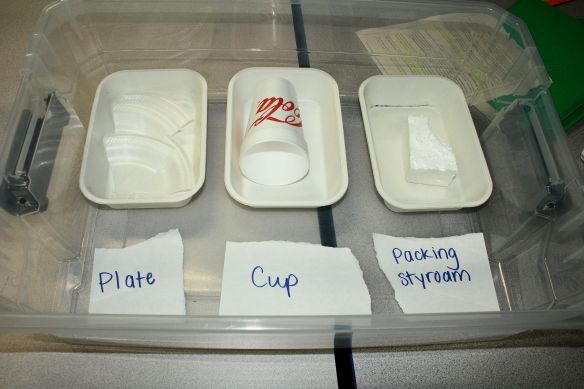
Before the worms were added to the bins
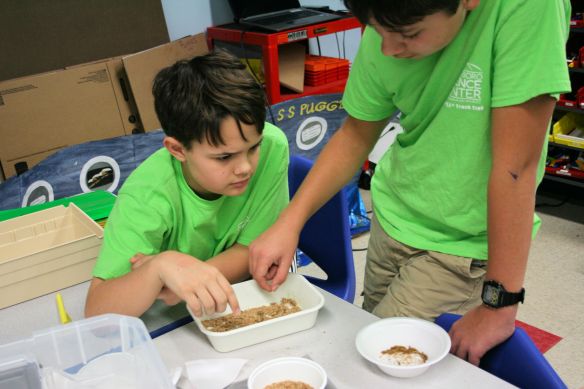
Counting the mealworms
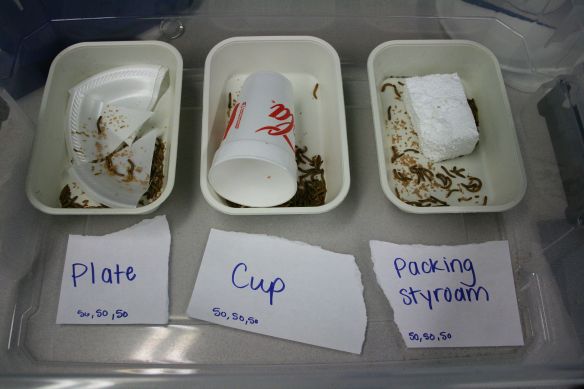
The initial containers with the mealworms

This is the week we put the mealworms into the 3 containers. We had one container for a block of packing styrofoam, one for a cup, and one for styrofoam plates. In each container, we put 150 mealworms in with the styrofoam and a sponge (water source).
All the worms we added were alive at the time and were eager to explore their new homes.
Week 2
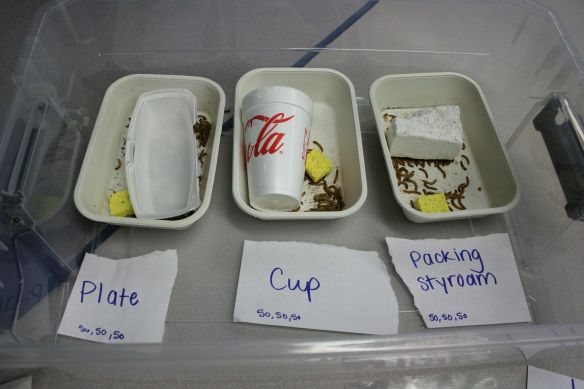
Week 2
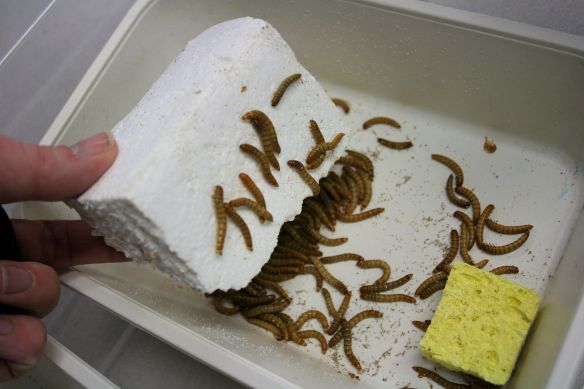
Week 2
The mealworms have begun to eat the styrofoam, however it is not a big amount. We carefully watched the worms over the week and realized the worms in the plate container were not eating and seemed to be starving. Our coach supplemented their diet with some cornstarch packing peanuts before changing their styrofoam out to a hot dog container.
In the block of packing styrofoam, the mealworms started to create holes in it. They could stick their heads in the holes, but that was about it. They had also eaten some of the red lettering on the Coca-Cola cup.
Week 3
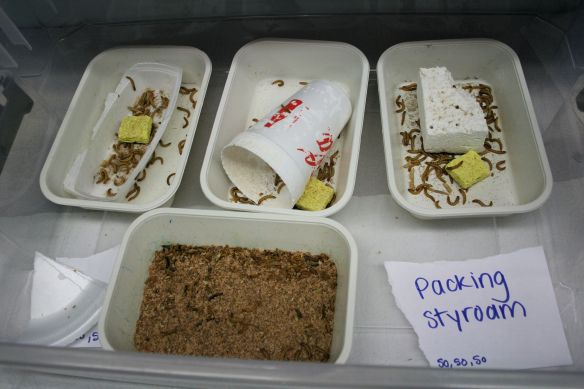
Week 3

Week 3
The mealworms have made some more progress since last week. This week there were clear holes going into the packing styrofoam and we think they started to burrow inside of it. The mealworms seem to be liking the hot dog container and were more lively that week. They have eaten some of it. The edge of the cup is a lot lighter, as well as the bottom.
You can see that there are several mealworms in their pupa stage now. They are moving on to the next stage of their development.
Week 4
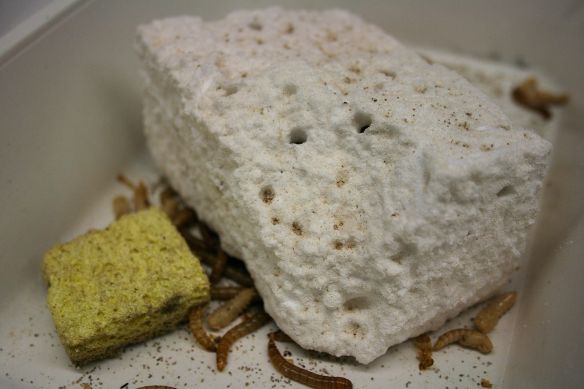
Week 4
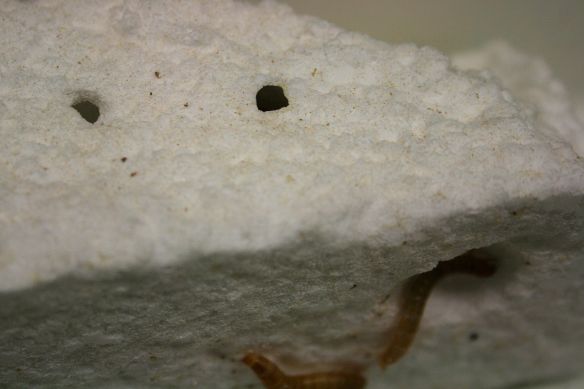
Week 4
The mealworms are still eating the styrofoam and it is clear the ones in the packing styrofoam block have burrowed inside. There are more worms in a pupa stage this week than there were in earlier stages. The hot dog container and the cup have holes in the them.
There are still a lot of worms in their pupa stage. We did have our first beetle this week. The first one we found one was deformed, with half of its exoskeleton missing. We are not sure if this is because of the experiment and the styrofoam nutritional content, but this happens in normal populations too.
Week 5
This is the last week of our experiment. There are a lot less worms in every container than there were the first week. We think some of the mealworms got trapped inside of the styrofoam block and could not leave as they developed. Also, some have gone through metamorphosis and become beetles; it is likely that they crawled into the bran control to find food once they became beetles.
All the containers show evidence of mealworms having eaten the styrofoam. In 5 weeks time, they ate some, but not a lot. We hypothesize that we would need to increase the number of mealworms in every container to see more breakdown. It may also be good to have more things in the environment than just styrofoam. Some alternative food choices may be good to prevent beetle malformations.
Watch this time-lapse video to watch mealworms break down Styrofoam:
